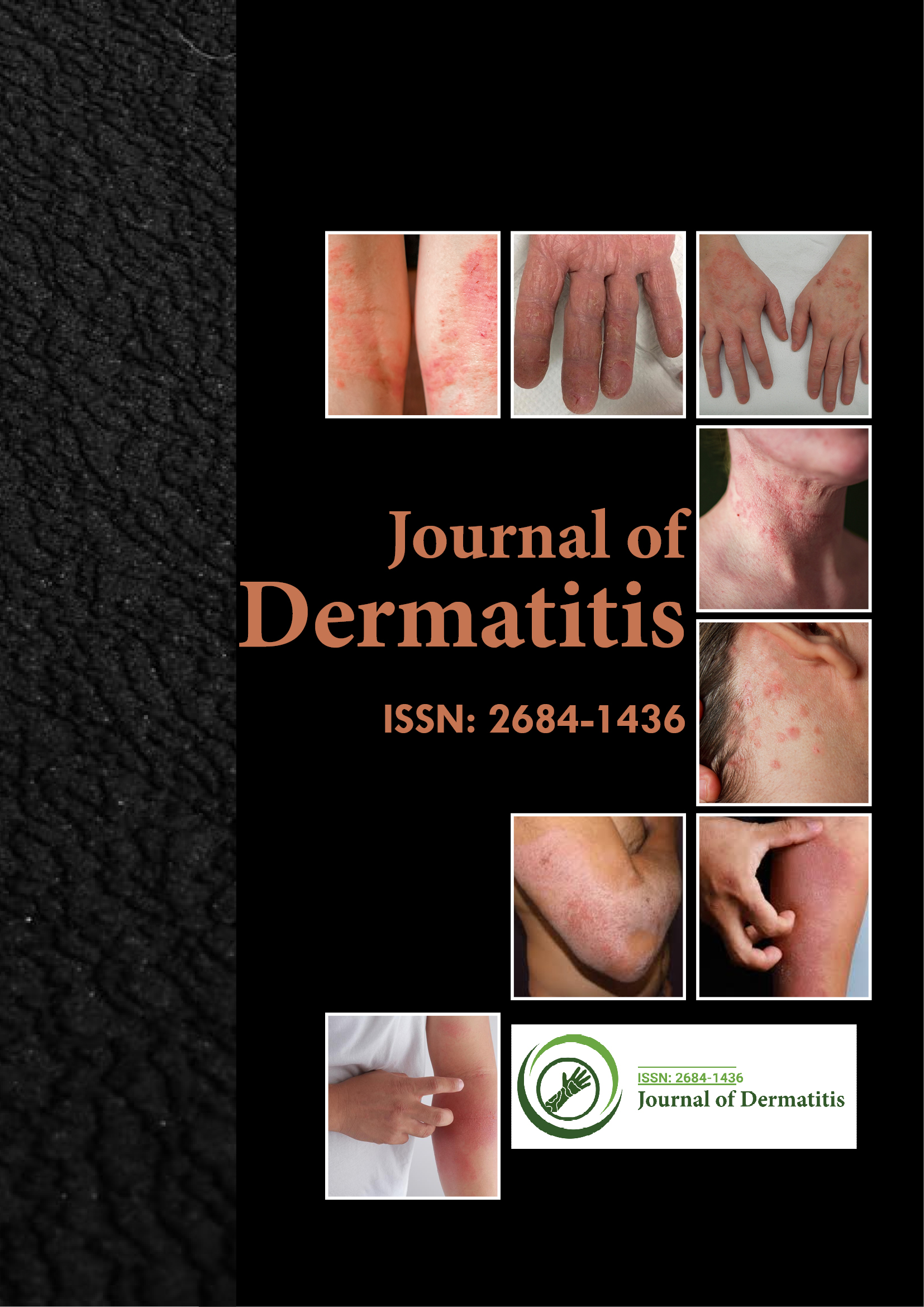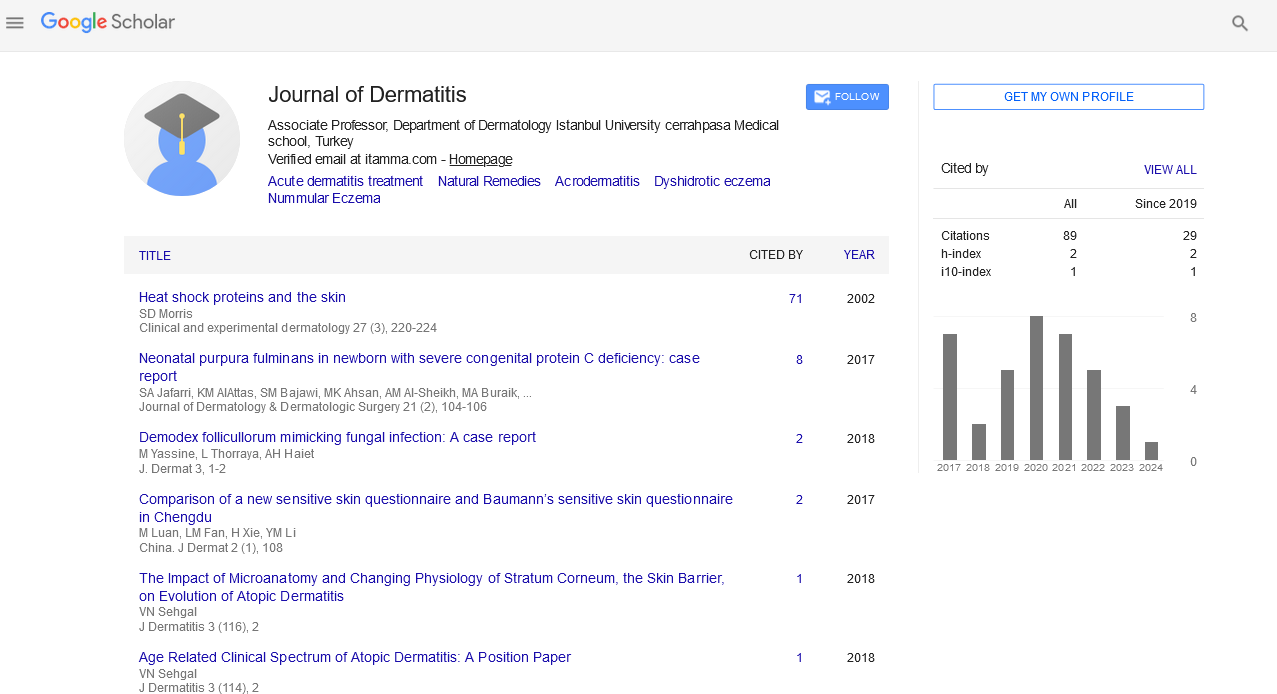Indexed In
- RefSeek
- Hamdard University
- EBSCO A-Z
- Euro Pub
- Google Scholar
Useful Links
Share This Page
Journal Flyer

Open Access Journals
- Agri and Aquaculture
- Biochemistry
- Bioinformatics & Systems Biology
- Business & Management
- Chemistry
- Clinical Sciences
- Engineering
- Food & Nutrition
- General Science
- Genetics & Molecular Biology
- Immunology & Microbiology
- Medical Sciences
- Neuroscience & Psychology
- Nursing & Health Care
- Pharmaceutical Sciences
Editorial - (2021) Volume 6, Issue 3
Negative Pressure Wound Therapy: Side Effects and Complications
William Martin*Received: 05-May-2021 Published: 26-May-2021, DOI: 10.35248/2684-1436.21.6.e119
Description
Negative pressing factor wound treatment (NPWT), likewise called vacuum-helped wound conclusion, alludes to wound dressing frameworks that consistently or irregularly apply sub atmospheric strain to the framework, which gives a positive strain to the outside of an injury. NPWT has become a famous therapy methodology for the administration of numerous intense and constant injuries. Sub atmospheric pressure has numerous advantageous consequences for twisted recuperating in creature models. Not with standing, clinical proof of its prevalence over regular injury dressing methods for all twisted kinds has not been demonstrated. The accessible randomized preliminaries have huge heterogeneity in the idea of wounds treated and in essential and auxiliary endpoints, making thorough correlations troublesome and restricting the capacity to sum up their outcomes. The overall component of activity of NPWT, its clinical uses and contraindications, arrangement and the executives of the gadget, and viability in explicit clinical applications will be inspected here. Monetarily accessible frameworks for negative pressing factor wound treatment (NPWT) incorporate the vacuum-helped conclusion (VAC treatment) gadget and the Chariker-Jeter wound fixing pack. VAC treatment is the most broadly contemplated framework in randomized preliminaries. NPWT frameworks comprise of an open-pore polyurethane ether froth wipe, semiocclusive cement cover, liquid assortment framework, and attractions siphon.
The best pressing factor for wound recuperating gives off an impression of being roughly 125 mm Hg, utilizing a substituting pressure pattern of 5 minutes of pull followed by 2 minutes off attractions. Creature contemplates have shown that this method: Optimizes blood stream in the injury bed, Decreases nearby tissue growing, Eliminates over the top liquid that can moderate cell development and expansion in the injury bed, Diminishes the quantities of microorganisms, Additionally, irregular low pressing factor adjusts the construction of the phones in the injury bed, setting off a course of intracellular signs that expansion the pace of cell division and the arrangement of granulation tissue. There are presently a few economically accessible frameworks for negative-pressure wound treatment and different dressing alternatives designed for explicit injury applications. Mains-worked frameworks are accessible for patients with restricted portability or vigorously oozing injuries. Lightweight, battery-fueled units have a more modest canister volume appropriate for a walking patient with an injury that has negligible to direct degrees of exudate. Units can be customized to give fluctuating levels of pressing factor either constantly or irregularly. During the methodology: A froth dressing is sliced to the rough size of the injury with scissors and put tenderly over the injury, A channel tube is put over the froth, The froth dressing, along with the initial not many creeps of the waste cylinder and the encompassing space of solid skin, is covered with cement straightforward tape, The distal finish of the channel is associated with the negative-pressure unit, which is modified to create the necessary degree of pressing factor. When the unit is turned on, the air is drained out of the froth dressing making it breakdown inwards, attracting the edges of the injury with it, the liquid inside the injury is taken up by the froth and shipped into an expendable canister inside the fundamental negative-pressure unit. Negative-pressure wound treatment dressings ought to be changed like clockwork. In the event that there is contamination the dressing ought to be changed like clockwork. It could be feasible to leave the dressing on for longer periods if the injury isn't contaminated. Contingent upon the sort of wound, negative pressing factor wound treatment might be required for 2 a month and a half.
Citation: Martin W (2021) Negative Pressure Wound Therapy: Side Effects and Complications. J Dermatitis. 6:e119
Copyright: © 2021 Martin W. This is an open-access article distributed under the terms of the Creative Commons Attribution License, which permits unrestricted use, distribution, and reproduction in any medium, provided the original author and source are credited.

